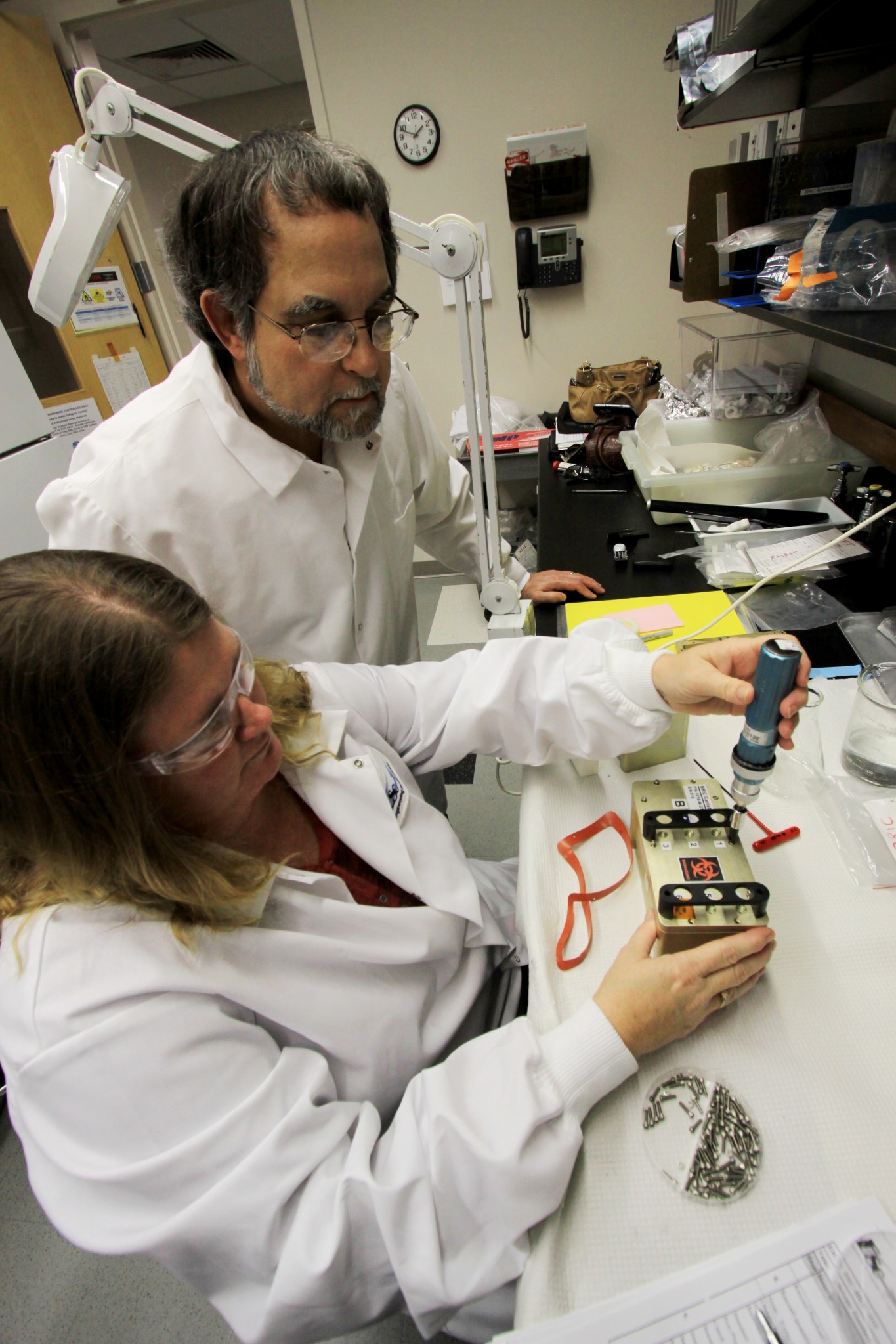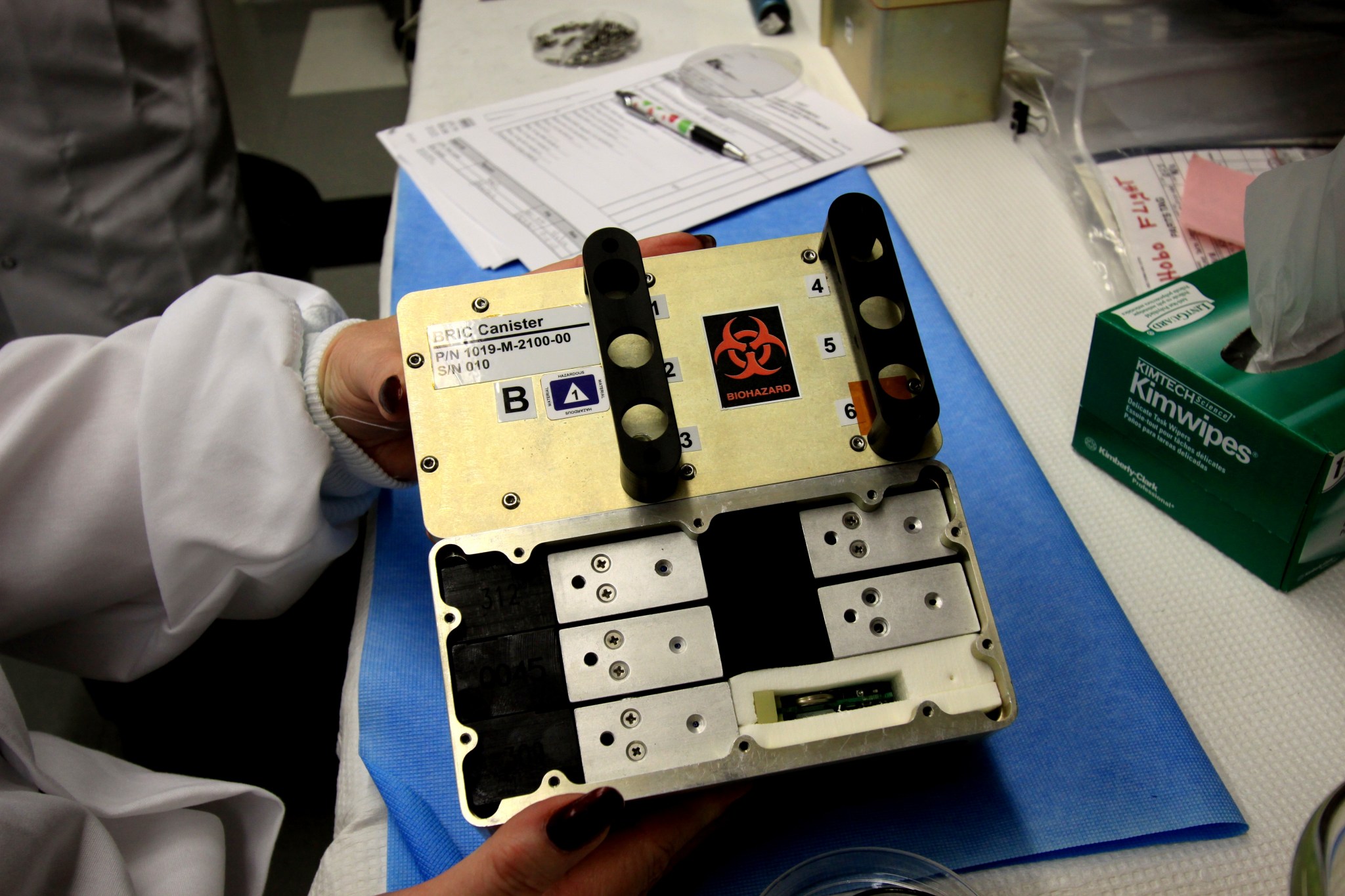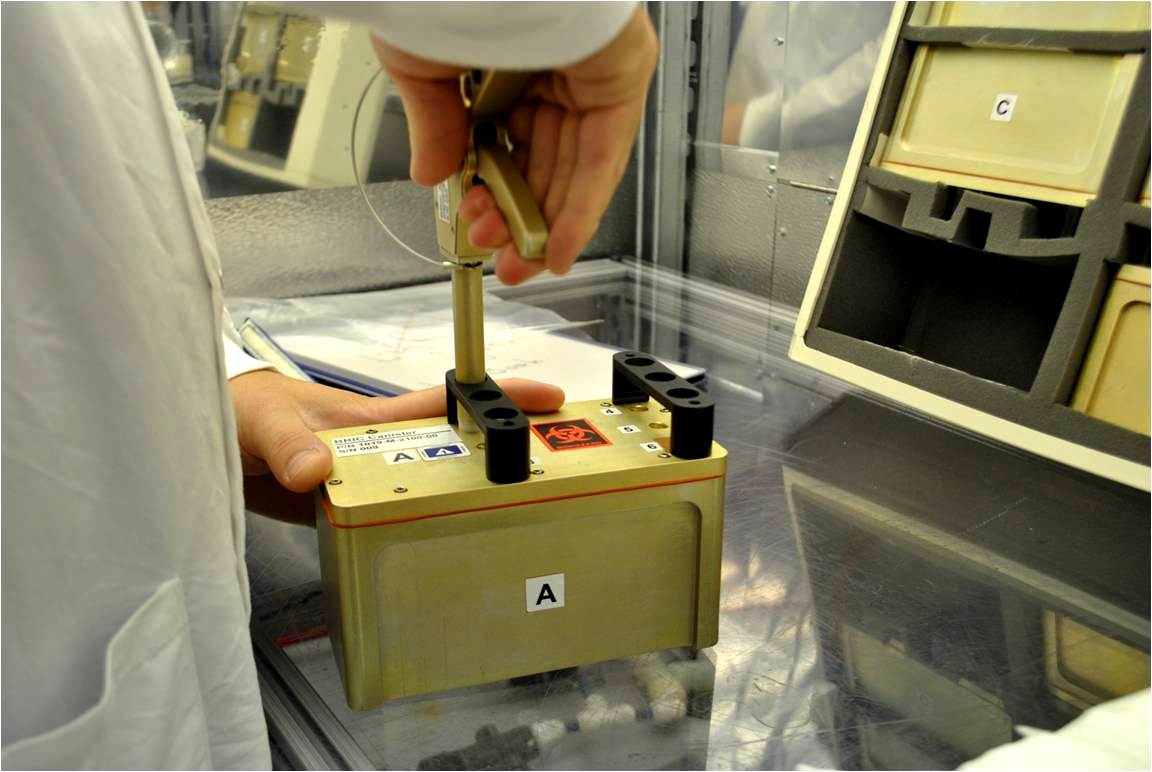On March 1, a Space Exploration Technologies Corp. (SpaceX) Dragon capsule lifted off aboard a Falcon 9 rocket from the Cape Canaveral Air Force Station in Florida on the second Commercial Resupply Services flight (CRS-2) to the International Space Station. Two investigations, Biological Research In Canisters (BRIC)-17-1 and BRIC-17-2 were aboard.
The BRIC series canisters consist of a compact storage system for housing experiments first used in studies during the U.S. Microgravity Payload mission aboard space shuttle Columbia’s STS-87 mission in November 1997. BRIC flew on three subsequent shuttle flights, including STS-135, the final shuttle mission, in July 2011.
“BRIC lends itself to the ‘fast-track’ model in which a payload can be ready to fly in six to eight months,” said Jose Camacho, BRIC project manager at NASA’s Kennedy Space Center in Florida. “It normally takes a much longer period of time to prepare an experiment for flight.”
The BRIC experiments flying on CRS-2 consist of work submitted by principal investigators Anna-Lisa Paul, Ph.D., professor of molecular genetics at the University of Florida and Simon Gilroy, Ph.D., professor of botany at the University of Wisconsin-Madison. Both investigators were selected in response to the NASA Research Announcement, “Research Opportunities in Space Biology.”
Paul’s study will investigate how “undifferentiated cells,” lacking the usual specialized structures traditionally required for response to gravity, react differently in space. An undifferentiated cell is an immature or undeveloped cell that has not yet acquired a special structure and function. The experiment will use cells from Arabidopsis, small flowering plants related to cabbage and mustard, to see if they reveal any unique gene development patterns in response to the space environment.
Gilroy’s investigation will examine how spaceflight affects gene development in Arabidopsis seeds under low oxygen conditions, or hypoxia. Root zone hypoxia is thought to develop in spaceflight as weightlessness leads to a reduction in the buoyancy-driven convection that usually aids in gas exchange around organisms. This in turn leads to the development of oxygen-limiting conditions with adverse effects on plant vigor and productivity.
The investigations also will contribute to an understanding of how environmental stimuli interact to affect plant development in a weightless environment. In addition, the plant analyses will test the potential for using defined mutations to tailor plants to thrive in space. Ultimately, these experiments will help provide a source of food during long-term spaceflight to destinations such as asteroids or Mars.
The BRIC canisters in which the experiments will travel are seven inches by four inches by four inches and hold five or six Petri dish fixation units. Each principal investigator will process four BRIC Petri dish fixation units.
Once aboard the orbiting laboratory, the experiments, packaged at 39 degrees Fahrenheit, will activate and will begin to grow upon exposure to the ambient temperature aboard the space station. The investigations will run between seven and 10 days.
The seedling and cell growth experiment will be stopped, or “fixed” in time, using a chemical called RNALater administered by a crew member using an actuator tool developed at Kennedy. “Fixing” the specimens stops all biological activity and prevents corruption of the microgravity effects when the experiment is exposed to gravity upon landing. The experiments are then frozen in the space station’s Minus Eighty Degree Laboratory Freezer (MELFI), and stored until they are ready to be placed back into the Dragon capsule for the return trip to Earth.
The same operations performed on the space station also will be performed in ground control units, stored in an environmental chamber at the Space Station Processing Facility at Kennedy.
“This will give the principal investigators the ability to study identical subjects and compare what happened in space to what took place in the gravity of Earth,” Camacho said.
“The plan is to have the experiments back in the hands of the principal investigators approximately 72 to 96 hours after Dragon splashes down in the Pacific Ocean,” said Camacho. “As we look ahead to longer-duration spaceflights, knowing how to grow plants will be crucial for food, as well as air and water purification.”





























